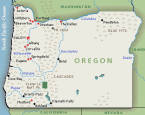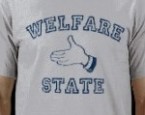Tag Archives : Welfare and Entitlements
Mirror, Mirror, on the Wall, Which State Has the Highest Food Stamp Usage of All?
The food stamp program seems to be a breeding ground of waste, fraud, and abuse. Some of the horror stories I’ve shared include: Using food stamps to buy luxury coffee at Starbucks. Buying steaks and lobster with food stamps. The Obama Administration rewarding states that sign up more food stamp recipients. Proposals to make it […]
read more...A Real-Life Example of How Government Handouts Create Life-Sapping Dependency
Remember Julia, the mythical moocher created by the Obama campaign to show the joys of government dependency? As illustrated by this Ramirez cartoon, Julia symbolizes the entitlement mentality. Unfortunately, there are many real-life Julias. I wrote a couple of years ago about Olga, a Greek woman who petulantly believed that government was responsible for her […]
read more...Thanks to the Welfare Hammock, Here’s another Horror Story about Deadbeats Sponging Off British Taxpayers
Here are some odious details from the UK-based Sun. Danny Creamer, 21, and Gina Allan, 18, spend each day watching their 47in flatscreen TV and smoking 40 cigarettes between them in their comfy two-bedroom flat. It is all funded by the taxpayer, yet the couple say they deserve sympathy because they are “trapped”. Does this […]
read more...Obama’s Vision of a Nation of Takers
If you don’t want to be depressed, you should stop reading right now. You probably know that we’ve been suffering because of a rising burden of government spending. And you probably understand that much of the problem is the relentless growth of redistribution and transfer programs. But you probably don’t realize how far America has […]
read more...Head Start: Another Costly Government Failure
What’s more realistic: A unicorn, Bigfoot, the Loch Ness Monster, or a successful government program? This isn’t a trick question. Even though I’ve presented both theoretical and empirical arguments against government spending, that doesn’t mean every government program is a failure. I suppose the answer depends on the definition of success. Government roads do enable […]
read more...Do You Live in a “Death Spiral” State?
Three years ago, I put together a “Moocher Index” that measured the degree to which non-poor people in a state were benefiting from redistribution programs. As you can see if you click on the nearby table, Vermont was the worst state, followed by Mississippi, Maine, New York, and Massachusetts. I confessed that my Moocher Index […]
read more...How the Welfare State Traps the Poor in Dependency, the British Version
Back in 2011, I linked to a simple chart that illustrated how handouts and subsidies create very high implicit marginal tax rates for low-income people and explained how “generosity” from the government leads to a tar-paper effect that limits upward mobility. Earlier this year, I shared an amazing chart that specifically measured how the welfare […]
read more...An Honest Liberal Confronts the Problem of Government Dependency
I’ve written and pontificated about the problem of government-created dependency and how the welfare state traps people in poverty. I also shared this dramatic chart showing how redistribution programs create shockingly high implicit marginal tax rates for those with modest incomes. But when a liberal writer for the New York Times basically comes to the […]
read more...Government Benefits Encourage Unemployment
It’s not something I should admit since I work at a think tank, which is based on the idea that substantive analysis can impact public policy, but I sometimes think humor and anecdotes are very effective in helping people understand issues. On the topic of unemployment insurance, for instance, I wouldn’t be surprised to learn […]
read more...The Federalism Solution to the Medicaid Nightmare
This election season has seen lots of talk (and demagoguery) about whether investors, entrepreneurs, and small business owners should be hit with class-warfare tax policy. And there’s also been lots of debate about the best way of averting bankruptcy for Medicare, which is the federal government’s health care program for the elderly. But there’s been […]
read more...



